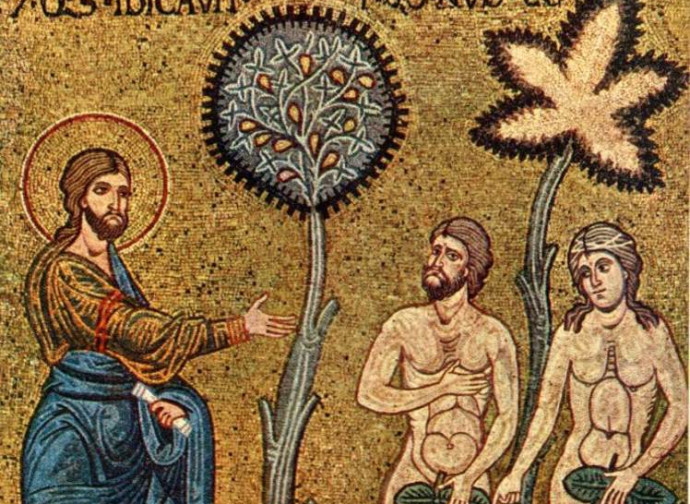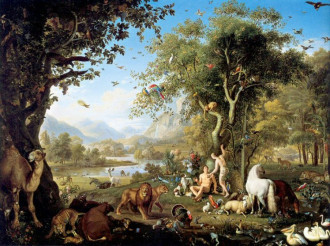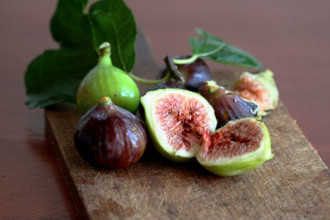The fig tree, present from Genesis to Revelation
In the Holy Scriptures there are 44 verses that mention the fig tree. Some believe it was the Tree of Knowledge of Good and Evil from which Eve picked the forbidden fruit. It certainly is rich in symbolism and Jesus referred to the fig tree several times in his public life. Even today Israel is full of these trees and their blossoming may be a messianic sign.

In the Holy Book there is one fruit that is present above all others: the fig tree. There are 44 verses that mention it.
In the Garden of Eden, the fig tree - considered by some to be the Tree of Knowledge of Good and Evil - was one of the important trees that the Lord planted, after the Tree of Life. He ordered Adam and Eve not to eat the fruit of the forbidden tree to avoid death, and they disobeyed Him. Yet, what is emblematic for many historians, when they speak of original sin and the expulsion from Eden, is that the mysterious fruit that Eve picked at the invitation of the serpent and then offered to Adam was a fig tree. The proof? When their eyes were opened, our ancestors covered themselves with fig leaves (Genesis 3:7): this suggests that they had used the leaves of the tree from which they had picked the fruit. But the mystery continues, just as the identification of the actual location of the Garden of Eden also remains a mystery.
The American archaeologist Juris Zarins (professor at the University of Missouri, specialising in Middle Eastern studies) thinks he has identified the location of Eden, which would be situated in the plain crossed by the Shatt al-'Arab river (more precisely in the region of southern Mesopotamia). It would be buried under tens of cubic metres of sediment. Two of the rivers mentioned in Genesis, the Tigris and the Euphrates, flow into the Shatt al-Arab today. Also considering the fact that the Persian Gulf (which was completely dry during the last glaciation) was flooded by the sea about 5000-6000 years before Christ, it is possible that Eden is now at the bottom of the sea. Juris Zarins, in his theory, also identifies the other two rivers mentioned in Genesis, the Pison and the Gihon.
 But let’s return to the subject of the fig tree. It was a tree commonly found in the land of Israel and was appreciated from the earliest times by all ancient peoples: the Egyptians, Assyrians and Greeks considered figs an important source of nourishment, both fresh and dried, the latter being a form that solved the feeding problems of many nomadic peoples or travellers (1 Samuel 25:18; 30:12; Judith 10:5).
But let’s return to the subject of the fig tree. It was a tree commonly found in the land of Israel and was appreciated from the earliest times by all ancient peoples: the Egyptians, Assyrians and Greeks considered figs an important source of nourishment, both fresh and dried, the latter being a form that solved the feeding problems of many nomadic peoples or travellers (1 Samuel 25:18; 30:12; Judith 10:5).
In those arid lands, the fig tree not only bore fruit, but also provided shade in the oases and marked the changing of the seasons: “For, behold, the winter is past, the time of rains is ended, it is gone; the flowers spring up on the earth, the time of singing is come, and the voice of the turtledove is heard in our land. The fig tree has set its fruit, the flowering vines exude their perfume. Arise, my love, my fair one, and come” (Song of Songs, 2:11-13).
The fig tree was a tree with rich symbolism, first and foremost: fertility and fecundity. But it was also a medicinal source (2 Kings 20:1-7): King Hezekiah, afflicted with ulcers, was treated with “a fig poultice” and healed.
 A plant of the Promised Land, in the prophetic books the fig tree is a symbol of peace (Micah, 4:4), prosperity (Joel, 2:22) and the faithfulness of the people in their covenant with God (Haggai, 2:19; John, 1:48-49; Zechariah, 3:10). The prophet Jeremiah also uses the symbolism of figs to show the difference between deliverance and condemnation, between good and evil: one basket contains good fruit, symbolising the people first deported and then delivered by God, while the other is full of bad fruit, similar to the condemnation of the king of Judah, Zedekiah (Jeremiah, 24:1-10; 29:17-18).
A plant of the Promised Land, in the prophetic books the fig tree is a symbol of peace (Micah, 4:4), prosperity (Joel, 2:22) and the faithfulness of the people in their covenant with God (Haggai, 2:19; John, 1:48-49; Zechariah, 3:10). The prophet Jeremiah also uses the symbolism of figs to show the difference between deliverance and condemnation, between good and evil: one basket contains good fruit, symbolising the people first deported and then delivered by God, while the other is full of bad fruit, similar to the condemnation of the king of Judah, Zedekiah (Jeremiah, 24:1-10; 29:17-18).
But the symbolism does not stop there: Jesus himself uses the fig tree as an example to impart his thoughts on self-giving and man's relationship with God. In Matthew (21:17-22) and Mark (11:12-24) we see Jesus cursing and withering a fig tree because it is rich in green leaves but lacks fruit. This is a miracle of Jesus, which has strong symbolism, even though Jesus' cursing of the fig tree is an action that may seem inconsistent with His actions (by the way, it was not even “the fault” of the fig tree, because “it was not the season for figs”, see Mark, 11:13). It is actually a parable based on symbols: the fig tree represents the city of Jerusalem, which does not respond to Jesus “in kind”, so it suffers divine punishment. Jesus uses the symbol of the fruitless fig tree to call the people (who had disappointed God's expectations) to conversion from sin.
In contrast, in Luke's Gospel, which emphasises God's mercy, the lack of figs on the tree does not provoke the curse:
He also spoke this parable: “A certain man had a fig tree planted in his vineyard, and he came seeking fruit on it and found none. Then he said to the keeper of his vineyard, ‘Look, for three years I have come seeking fruit on this fig tree and find none. Cut it down; why does it use up the ground?’ But he answered and said to him, ‘Sir, let it alone this year also, until I dig around it and fertilise it. And if it bears fruit, well. But if not, after that you can cut it down’ ” (Luke 13:6-9).
Here again Jesus tells us that spirituality can be cultivated, fertilised and nurtured. Unfaithfulness to the Covenant is indicated by the image of the barren and withered fig tree: “They have rejected the word of the Lord...there are no more grapes in the vineyard, nor fruit on the fig trees; even the leaves have withered” (Jeremiah, 8:13).
Transcendence is achieved by keeping alive the relationship with God: the fig represents a fruit of the spirit, which gives security and prosperity to the soul, as well as to the body. In the First Book of Kings, the prosperity of the people of Israel in the time of King Solomon is narrated through the symbol of the fig tree: “And Judah and Israel dwelt safely, each man under his vine and his fig tree, from Dan as far as Beersheba, all the days of Solomon” (1 Kings 4:25). We frequently find the expression “sitting under the fig tree” in the biblical texts.
In rabbinic tradition, this is not only a symbol of well-being and peace, but the rabbis’ favourite place to study and read the Torah. The history of Israel is intrinsically linked to the symbolism of the fig tree. In the New Testament we can also see Jesus using the fig tree symbolically - first in the call of Nathanael who was “sitting under a fig tree”, “an Israelite indeed” (John 1:47-50). Later he uses the fig tree as a metaphor for how we should recognise the signs of the times (Matthew 24:32). This system of describing the end times using the analogy of the fig tree is taken up again in Revelation 6:13: “And the stars of heaven fell to the earth, as a fig tree drops its late figs when it is shaken by a mighty wind”.
Thus, from Genesis to Revelation, the fig tree is strongly present in scriptural symbolism. As we have seen, there are many interesting references in the Song of Songs and the parables of Jesus, but also in the Book of Judges.
Even today Israel is full of fig trees: huge, well developed, shady and full of fruit. They produce two harvests of fruit a year, the early harvest around the time of Passover in the spring, even before the leaves have unfurled, while the bigger, better and juicier fruits arrive on their own in September, close to the Jewish festivals of Rosh HaShanah, Yom Kippur and Sukkot (Feast of Trumpets, Day of Atonement and Feast of Tabernacles respectively).
It is possible to consider that the blossoming of figs today in Israel is in itself a messianic sign: the people are waiting for the return of Jesus. The restoration will be a spiritual awakening and all its people will greet their Messiah, Jesus, saying: “Blessed is He who comes in the name of the Lord”. We are ready.


